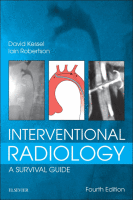Physical Address
304 North Cardinal St.
Dorchester Center, MA 02124

Nephrostomy Percutaneous nephrostomy is one of the most frequently performed interventional procedures and is a technique in which every radiologist should feel completely confident. Urgent drainage is required in an infected obstructed system due to the resultant rapid renal loss…

There are several conditions which have been grouped together relating to the urogenital tract and which loosely impact on fertility. Uterine artery embolization Indications for treatment The vast majority of uterine artery embolization (UAE) is performed to manage symptomatic fibroid…

Treating fluid collections and abscesses is part of the bread and butter of interventional radiology. The minimally invasive nature of interventional radiology (IR) drainage makes it an obvious choice for many postoperative collections, particularly in the elderly and frail. Pre-procedure…

A combination of increased use of diagnostic imaging and advances in therapeutic interventions means that obtaining tissue to aid diagnosis and cellular typing is now more essential than ever. Most diagnostic and interventional radiologists require core skills in biopsy. The…

Despite being a great opportunity to talk to your patients, obtaining haemostasis after a diagnostic or therapeutic angiogram is tedious. Hence, the art of staunching the flow is often neglected or delegated to the most junior member of staff in…

Foreign body retrieval is almost exclusively reserved for iatrogenic problems, most of which will have been of your own making! The techniques and equipment described can also be used for snaring guidewires for pull-through procedures or to reposition misplaced central…

Embolotherapy is the deliberate blockage of blood vessels; it is usually performed to stop haemorrhage and may be life-saving in gastrointestinal bleeding and trauma. Embolization is sometimes used as an adjunct to surgery and in the treatment of a variety…

You’re Reading a Preview Become a Clinical Tree membership for Full access and enjoy Unlimited articles Become membership If you are a member. Log in here

Expandable stents are used to manage luminal narrowing in many systems from the aorta to the trachea. As with angioplasty, there is a common skill-set required for deployment, regardless of location but the indications and outcomes are very different so…

Angioplasty and stenting are cornerstone techniques in interventional radiology and have widespread non-vascular and vascular applications. The key skills and equipment choices remain largely the same, regardless of the site. The main indication for angioplasty is the treatment of atherosclerotic…